
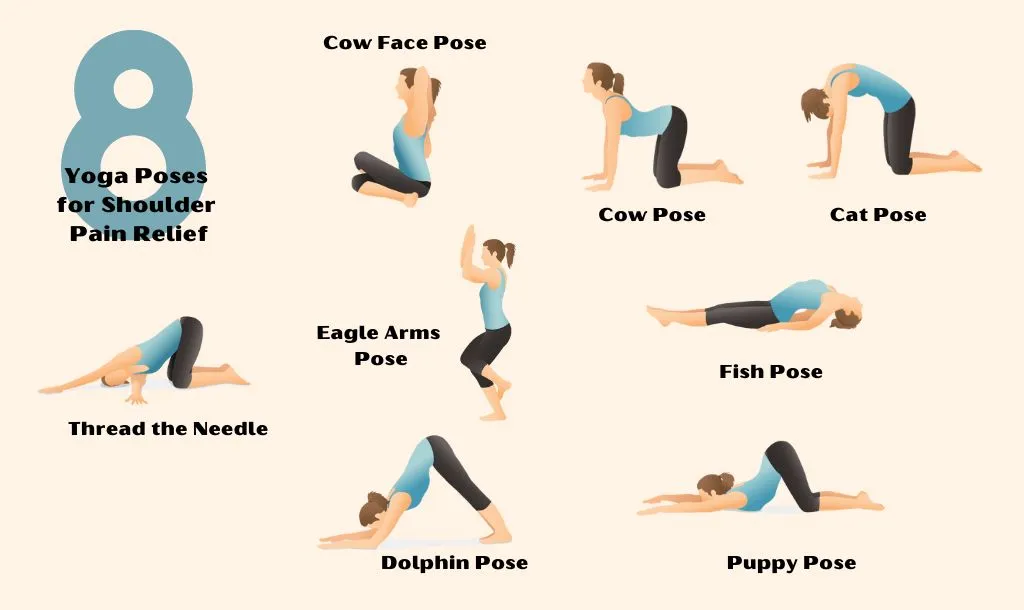
Whether it’s from long hours at your desk, daily stress, or aging joints, shoulder pain can turn simple tasks—like brushing your hair or getting a good night’s sleep—into a struggle. In fact, studies show that around 16% of adults experience shoulder discomfort at any given time, with some reports indicating monthly rates of nearly one in three.
The good news? Yoga offers a gentle, natural way to find relief.
Yoga for shoulder pain combines soothing stretches, light strengthening, and mindful movement to ease tension, improve mobility, and support lasting healing. In this guide, you’ll discover 8 beginner-friendly and expert-approved poses that target common shoulder issues like rotator cuff strain, shoulder blade tension, and frozen shoulder.
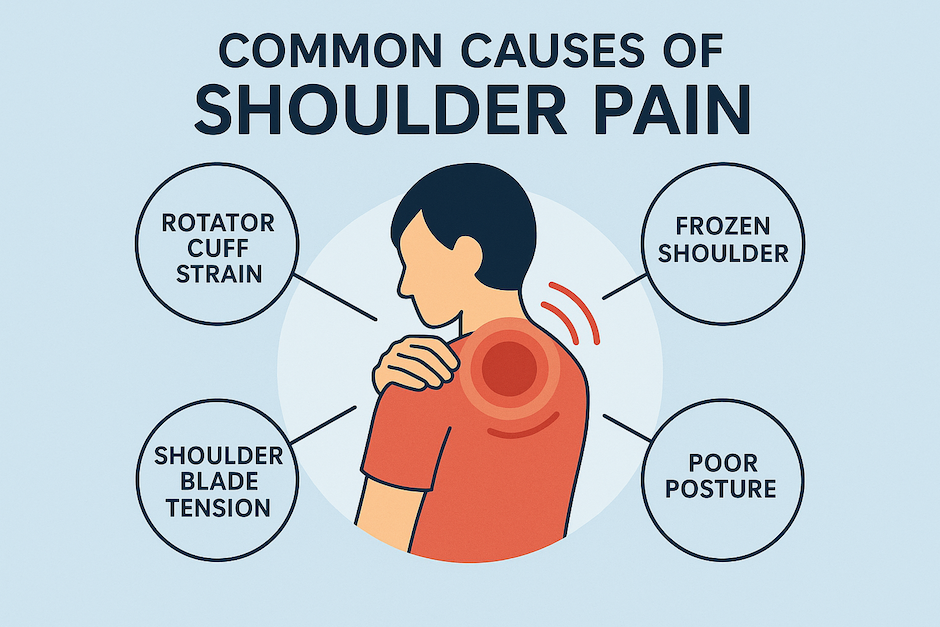
Shoulder pain often stems from long hours at a desk, stress, or lack of movement. However, yoga offers a natural way to restore balance by gently releasing tension and strengthening weak areas, preventing the occurence of shoulder pain in the long run.
Here’s what to look out for:
The rotator cuff muscles help lift and rotate your arm. Repetitive movements or poor posture can cause small strains or irritation, leading to pain in the shoulders.
Yoga for rotator cuff pain focuses on gentle strengthening and improving flexibility, helping prevent further strain.
Frozen shoulder can cause stiffness and pain, limiting your range of motion, often after an injury or prolonged inactivity.
Yoga promotes slow, controlled movement to improve circulation and gradually restore mobility over time.
Stress and desk work often lead to tightness between the shoulder blades, creating painful knots or “trigger points.”
Yoga for shoulder blade pain uses stretches and mindful breathing to release tension and improve posture, offering relief from tech neck.
Slouching over a screen rounds the shoulders forward and weakens the upper back.
Yoga corrects this imbalance by opening the chest, strengthening postural muscles, and retraining your body to sit and stand tall.
So, if you’re wondering whether yoga is good for shoulder pain, the answer is a resounding yes! Studies have shown that regular yoga practice can reduce shoulder pain by up to 40% in just 8 weeks.
Looking for a simple and effective way to ease shoulder pain? Book a free 1-on-1 session today!
Practicing yoga for shoulder pain consistently can provide relief and prevent pain from coming back. A few benefits include:
Poses like Puppy Pose and Thread the Needle gently encourage safe flexibility gains, even for complete beginners.
Through bodyweight poses like Cat-Cow and Dolphin Pose, you’ll build balanced strength that keeps your shoulders healthier long-term.
Simple poses like Cobra and Fish Pose reverse poor posture habits built up from hours at a desk.
Even just 10 minutes of yoga a day can help break the pain-stress cycle, making your shoulders feel lighter.
These beginner-friendly yoga poses are designed to release tension, restore mobility, and strengthen the supportive muscles around your shoulders. Go slow, focus on comfort, and use props to make the poses work for your body.
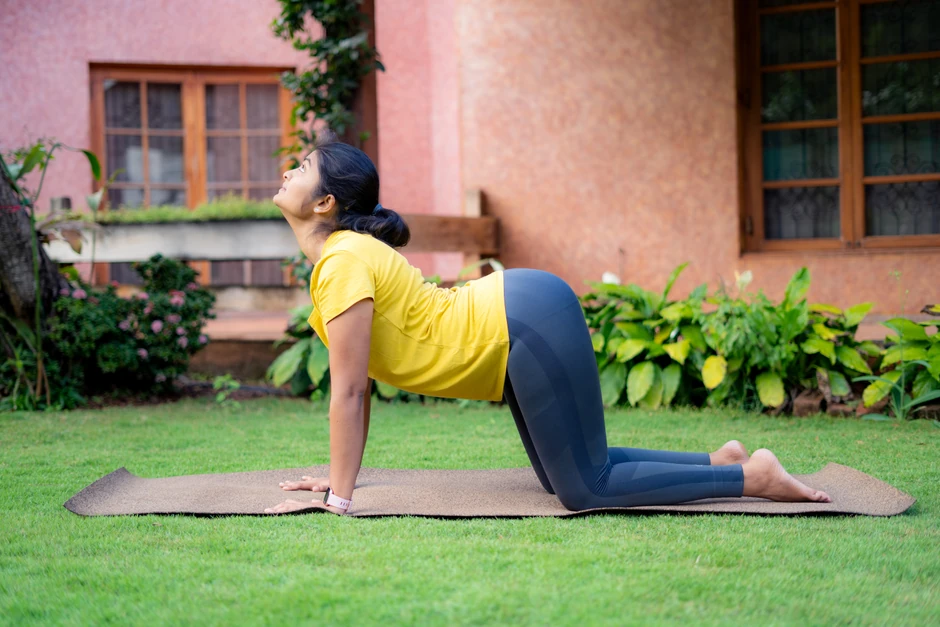
This pose gently mobilizes the shoulders and upper back while warming up the spine.
Modification: Do this seated on a chair if kneeling is uncomfortable.
This is a great pose to release deep tension between the shoulder blades and upper back.
Modification: Place a pillow or folded blanket under your head and shoulder for support.
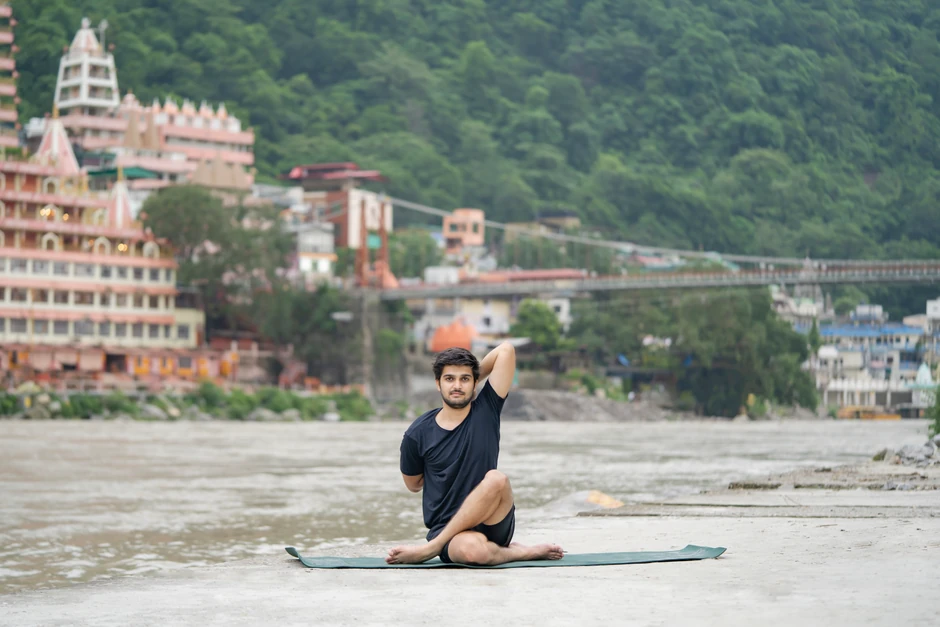
This pose provides a deep shoulder stretch, especially for tight upper arms and rotator cuffs.
Modification: Use a strap or towel between your hands if they don’t touch.
This pose builds shoulder strength while opening and lengthening the upper back.
Modification: Bend your knees slightly or stay in the forearm plank to reduce intensity.
Puppy Pose gently stretches the shoulders, chest, and upper spine while encouraging relaxation.
Modification: Rest your chest on a bolster or blanket for extra comfort.
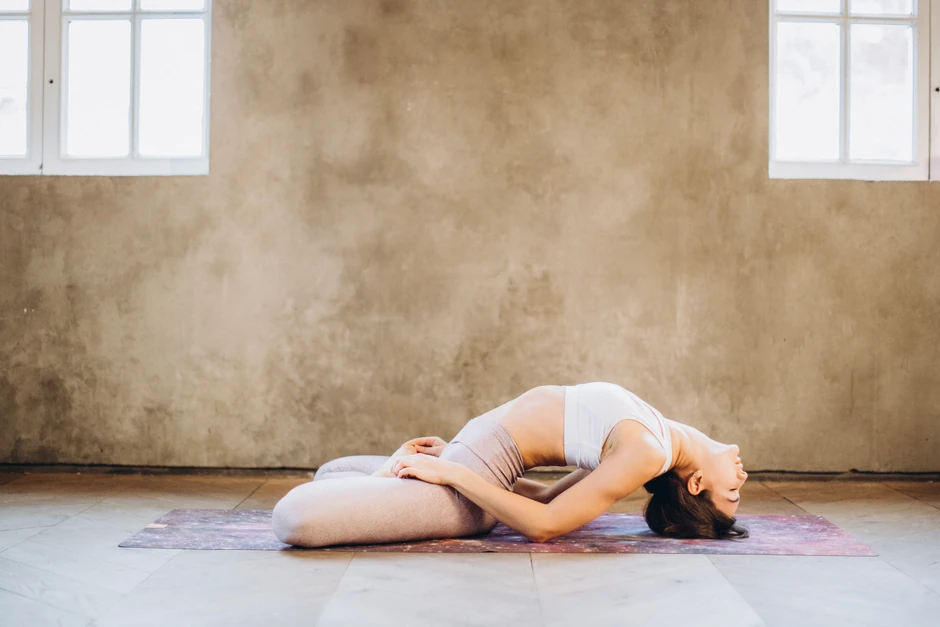
This pose counteracts rounded shoulders by opening the chest and gently releasing upper back tension.
Modification: Use a smaller roll or pillow if the full backbend feels too intense.
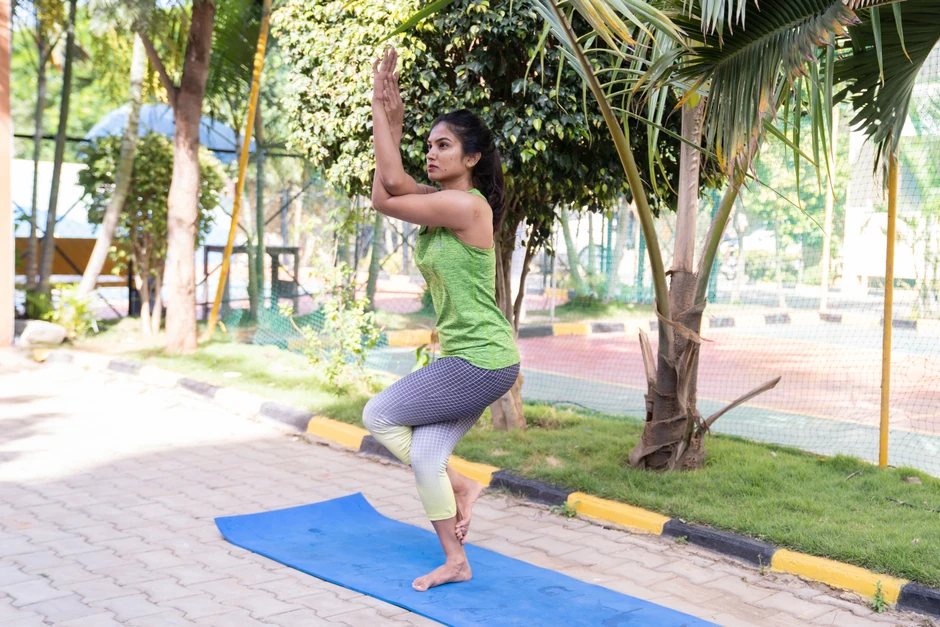
This is a great pose to release shoulder, upper back, and neck tension while improving flexibility.
Modification: If your palms don’t touch, hold the opposite shoulders instead.
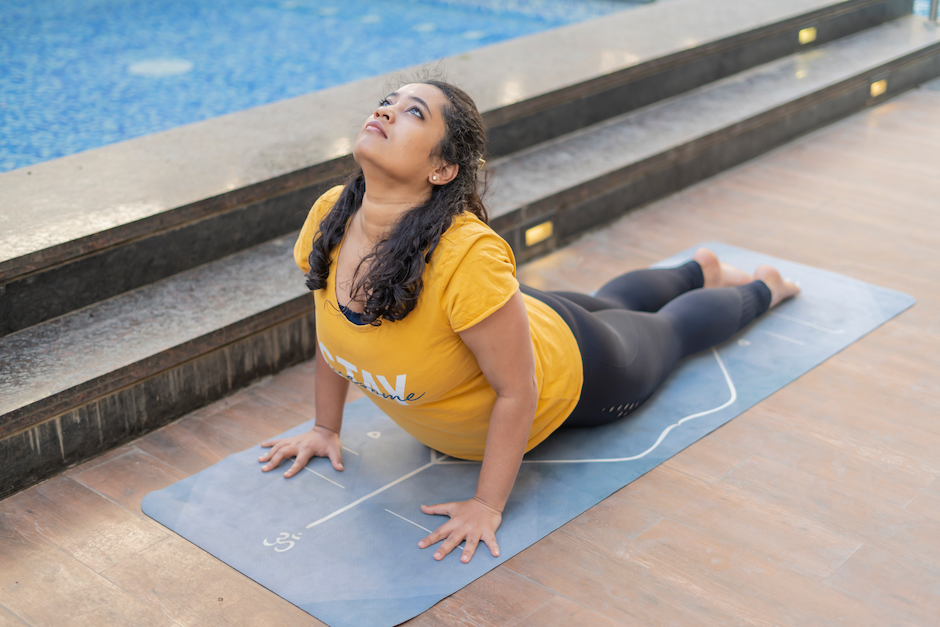
This pose strengthens the upper back while gently opening the chest and shoulders.
Modification: For less intensity, stay in Sphinx Pose with forearms on the ground.
Want to learn proper form and alignment to make the most of your practice? Sign up for this group class and workout under expert guidance: Ease Neck & Shoulder Pain with Yoga.
Short on time? This simple, beginner-friendly routine is designed to loosen shoulder tension in just five minutes—perfect for mornings, work breaks, or winding down at night.
1. Gentle Warm-Up (1 Minute)
2. Active Stretch & Release (3 Minutes)
3. Relax & Restore (1 Minute)
Use props like a towel, blanket, or yoga block to make poses more comfortable. Consistency can bring noticeable improvements in just a few weeks.
Get a personalized workout routine to meet your specific needs. Book a free 1-on-1 session here!
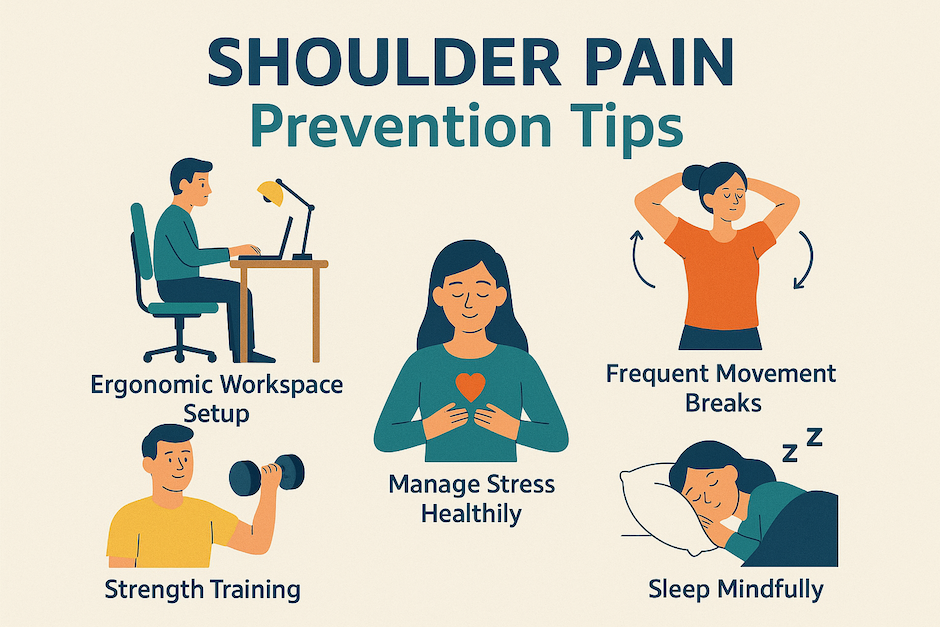
Prevention is just as important as pain relief. These simple lifestyle habits can help you keep your shoulders healthy and pain-free in the long run.
Shoulder pain doesn’t have to be your daily reality. With consistent, gentle movement and a little guidance, yoga can help you find lasting relief without the need for medications or painkillers.
Ready to feel better? Book a 1-on-1 yoga session with a certified yoga coach who specializes in pain relief.
Frequently Asked Questions
Yes! Gentle yoga stretches and movements help relieve muscle tension, improve flexibility, and strengthen supporting muscles around the shoulder, without causing strain.
Some of the most effective poses include:
These poses gently stretch and release tight shoulders while improving posture.
Many people begin to notice relief after 1–2 weeks of regular practice. For chronic pain, consistent yoga over 6–8 weeks can lead to significant improvement, especially when combined with lifestyle changes.
Yoga won’t “fix” a torn rotator cuff, but gentle, non-straining poses can support healing by improving mobility, reducing inflammation, and strengthening nearby muscles. Always consult your doctor first.
Yes, as long as you:
Start with 3–5 sessions per week, even if just for 10 minutes. Consistency is more important than duration, and over time, your shoulders will feel stronger and more relaxed.

Receive personalized guidance tailored to your unique fitness goals, live with a dedicated coach—no credit card required.